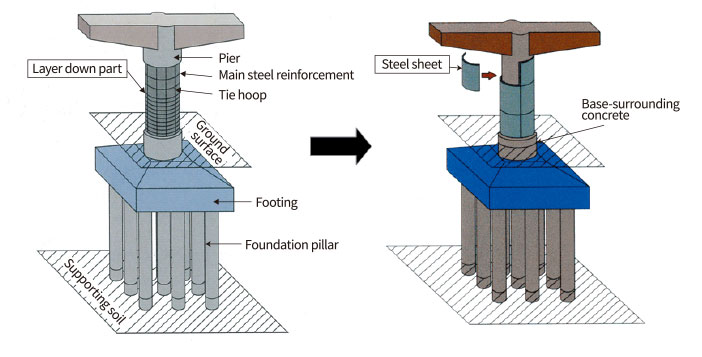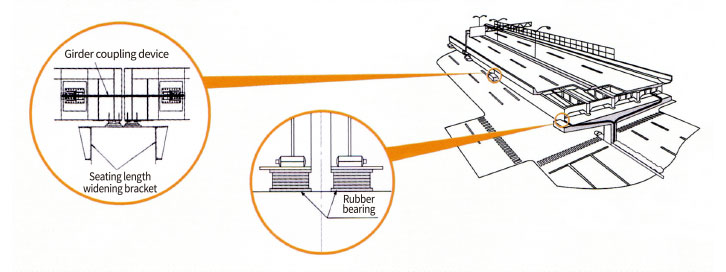Business continuity plan (BCP) for potentially large earthquakes
To ensure the road network's function as an emergency traffic route that is capable of implementing disaster response services even if the network is damaged during a large earthquake, our company formulated a "Business continuity plan (BCP) for potentially large earthquakes, First Edition" in October 2009, but based on the issues brought to light by the Great East Japan Earthquake and tsunami and the solutions to them, the second edition was formulated at the end of October 2011. Furthermore, due to the amendment of the Basic Act on Disaster Control Measures in November 2014, the third edition was formulated based on the inclusion of regulations concerning the movement of stranded vehicles by road managers.
1. Basic items
Assumed earthquake
The potential earthquake in this BCP assumes an earthquake directly below the southern end of the city center (M 7.3) and a maximum seismic intensity of 6 upper (partially 7).
Action guidelines
The BCP supposes a situation where employees cannot contact one another in the panic immediately after the earthquake. Executives and employees should act independently if an earthquake of intensity 5 upper or greater occurs in the jurisdiction of the Metropolitan Expressway.
2. Main details
Headquarters system
In the event that a major earthquake occurs outside working hours, a system has been set such that the director in charge of disaster prevention, acting as the director-general (director), or the maintenance and transport manager will immediately rush to headquarters and run operations while remaining close to the headquarters.
Assembly system
To smoothly respond to an earthquake of intensity 5-upper if it occurs outside working hours, the company maintains an 'assembly system' in which employees living near the office (generally within a 6 km radius) will come together and form an initial assembly. In addition, the initial assembly members also instruct and guide all technicians after an intensity 5-upper earthquake.
Special traffic patrol
Including the evacuation of stalled cars and closing road entrances, the special traffic patrol is expected to implement such measures within 3 hours after an earthquake. In addition, definite evacuation methods (roads of managed PA, nearest exit, etc.) have been arranged for each toll gate.
Inspection under overhead structures
The inspection priority of the route (about 88 km, about 30% of the entire route) is determined, and inspection under the overhead structure is generally done in 3 hours. In addition, we also inspect parts under overhead structures on other routes continuously and finish it as soon as possible.
Measures against tsunamis
We collect tsunami information from the Meteorological Agency and other local government bodies, understand and identify tsunami-prone areas based on that information and then determine the disaster response.
Arrangements for backup office
Backup offices have been set up assuming that the head office and other branch offices may be unusable during an earthquake.
Securing communications infrastructure
Multiple means of communication and transmission equipment have been set up such that communication can be secured between relevant organizations and within the company even during disasters.
Removing obstructions from roads
We have established procedures for removing obstructions from roads which include cooperating with relevant organizations and moving stranded vehicles.
*Information regarding the important points among the disaster response operations given in the BCP is specified in the attached table of the PDF (PDF/47KB).




